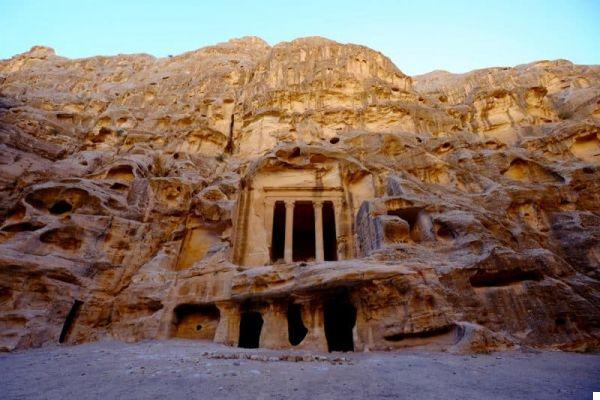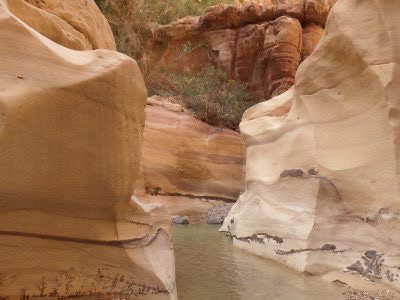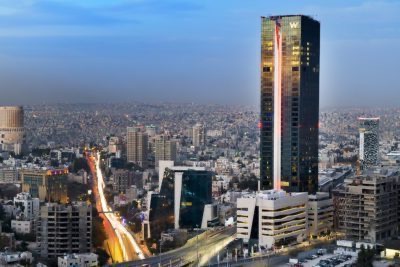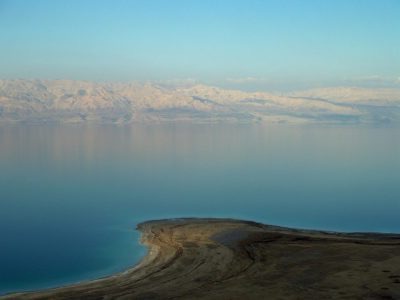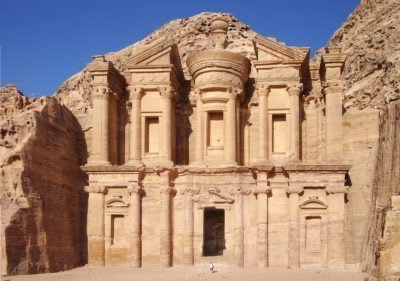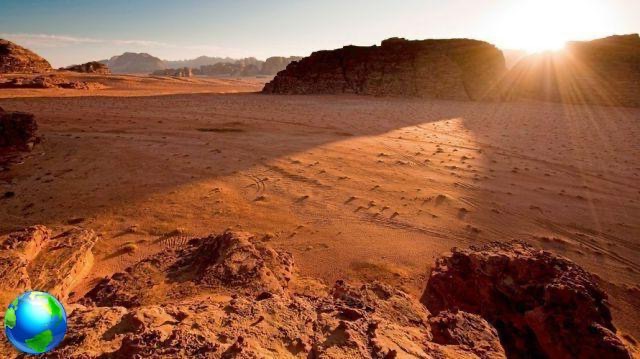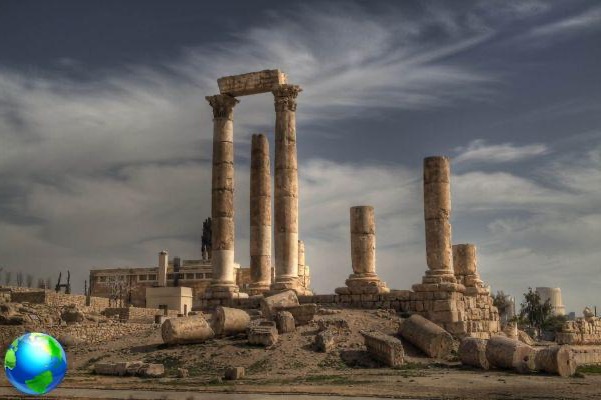** UPDATE September 2021 - All the rules for entering / leaving Jordan **
Jordan has recently been included in list D, that is, in the list of countries to which travel is allowed without the need for motivation (therefore also for tourism). Furthermore, to return to Spain from Jordan, it will no longer be necessary to do the quarantine but simply fill in the on-line localization form (also called digital Passenger Locator Form (dPLF) and present it, on your mobile device or in paper version, at the time of boarding, plus the vaccination certificate or negative result of a molecular or antigen test carried out in 72 hours preceding entry into Spain. To find out the entry rules adopted by the Jordanian government, consult the page dedicated to Jordan on Safe traveling.
When you are talking about Jordan the thought immediately goes to Petra, the ancient necropolis of the Nabataeans; in fact, in this small Middle Eastern nation of natural and architectural beauties there are many. Jordan has 5 sites recognized by UNESCO as a World Heritage Site (Petra, Wadi Rum, Bethany, Amra Castle and Umm al-Rasas), but the real heritage of this country from my point of view is its people. Jordanians are among the most tolerant and welcoming peoples in the world: Suffice it to say that out of 10 million inhabitants as many as 2 million are Palestinian refugees and about half of the total population has Palestinian origins. Despite being a small, desert and substantially poor country (only 2% of the territory is arable), it has always opened its doors to refugees from neighboring countries torn by conflicts such as Palestine, Iraq and more recently Syria. Hospitality is a cornerstone of their culture and contact with the locals is certainly one of the best aspects of this trip.
How to get a visa for Jordan
To enter Jordan it is necessary to have an entry visa. The latter it is released in a few minutes directly upon arrival at the airport and in almost all land border posts at a cost of 40 JOD (about 48 euros). Whoever is in possession of the Jordan Pass (see paragraph below) and has confirmed the reservation of at least 3 nights in a hotel is exempt from paying the visa.
What is the Jordan Pass and why buy it
Il Jordan Pass is a sort of "discount card" that allows you to visit practically all the sites of interest in the country (there are more than 40 - those excluded are very few) saving money and time, as well as not paying the entry visa (if you have the reservation of at least 3 nights in the hotel). The Jordan Pass must be purchased online with a credit card from Spain before traveling on this site. The purchase procedure is very quick and at the end you will have a barcode that you will have to show (directly from your mobile or paper) at the ticket offices of the various places of interest. There are 3 types of Jordan Pass that differ only in the number of days of entry to Petra: the Jordan WONDERER (70 JOD - 1 day in Petra), the Jordan EXPLORER (75 JOD - 2 days) and the Jordan EXPERT (80 JOD - Three days). The savings are obvious: if you buy separately even just the entry visa (3 JOD) and 40 day of entry to Petra (1 JOD) you will spend 50 JOD more than the Jordan WONDERER which includes all the other attractions.
How much is spent in Jordan
Jordan is cheap enough; to sleep in a nice hotel / hostel you spend an average of 25-30 euros (for a double room), for food you can spend from 1 JOD (for a kebab along the road) to 20-25 JOD (for a dinner in a nice restaurant ) and the rental of a car can range from less than 20 euros per day (for a small car) to 100 or more (for a 6-7 seater jeep). Entrance to Petra is the most expensive ticket and it is understandable given that 80% of Jordan's economy is based on tourism and, in particular, on this site. As you will have understood, the local currency is the Jordanian Dinar (JOD) , which is worth around € 2017 (quotation as of December 1,20). ATMs and exchange offices are located in all places of tourist interest (except Wadi Rum) and in many places it is possible to pay by credit cards (mainly VISA or Mastercard). Avoid changing money at the airport because the prices are particularly inconvenient; if you land in Amman taking the minimum necessary to pay the taxi that will take you to the center (costs 20 JOD, bargain before getting on).
Travel to Jordan: risks and safety
When I said I was going to Jordan, as well as when I returned, I felt that the issue of security is very much felt. So many of you have asked me if Jordan is safe. Well yes, Jordan is an absolutely safe country. It is the only country at peace in the whole Middle East area, it is a stable country with a king (Abdullah II) much loved by the people, and it has barely been touched by the riots of the Arab Spring square. Given its position as a "buffer" it obviously adopts various security measures but you will not see a particularly militarized country. You will meet some roadblocks along the way but ... normal administration; when they see that you are tourists they will smile at you and let you go with a nice "Welcome to Jordan!".
Health insurance is required
In Jordan our health coverage is not valid. My advice is to always take a classic medical-luggage insurance that can cover you during the trip. I am very happy with many insurance companies, a site that compares the policies of different companies and proposes the most convenient policy for that particular trip. To do this you will have to enter the data relating to your trip (country, duration, etc.) and they will send you an email with the best proposal that you can then buy directly online.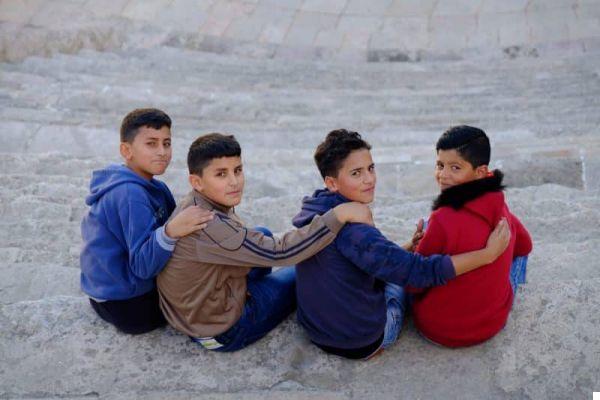
When to go to Jordan
You can always go to Jordan. The best time is probably spring (which coincides with the high season) when the weather is perfect all over the country and the days are mild both day and night. In autumn / winter (September to February) during the day it is good (15-25 °) in most of the country, but during the night the temperatures can drop to 0 ° or even less (especially in Petra and in the Wadi Rum). In summer, the heat is stifling and visiting Petra, Wadi Rum or the remains of Jerash can be particularly tiring (there is no shade).
What to bring and how to dress in Jordan
If you visit it in winter and plan to go to the Wadi Rum desert, don't forget to pack a sweater and thermal tights, gloves and hat in your backpack. More generally (and especially in summer) be respectful of the local culture by avoiding wearing low-cut, provocative or too short dresses.
How to get there and how to get around Jordan
As mentioned above, the most convenient and common access points are the Amman airport or the land border between Eilat (Israel) and Aqaba. Amman airport is about 35km from downtown and the best way to get there is by taxi (bargain to pay 20 JOD, no more). The best way to get around Jordan is definitely by car. Public transports exist but they are few; on average there are 1 maximum 2 buses a day to the various locations and they leave only when they are full. Added to this is the priceless freedom of movement that you have by renting a car. The roads are good all over the country and the Jordanians are quite "civilized" to drive. Remember that, with some exceptions, an International Driving License is required. To rent the car I normally use the Rentalcars website. 
Where to sleep in Jordan
Jordan offers accommodation to suit all budgets; I slept in small mid-range hotels and they were all nice and clean enough (it's not Sweden but the standards are more than acceptable). In general I would like to give you 2 tips in particular: 1) on the Dead Sea do not sleep in the resorts that overlook the sea - on average they are quite ugly and expensive, not to mention that you will then be isolated because there is nothing else around to be able to reach on foot. I slept in the town of Madaba (which is 30 'by car) and I was very happy with the choice; 2) spend a night in a tented camp in Wadi Rum, it is a truly beautiful experience and the sunrise and sunset you will see from there will be impossible to forget. I slept in these hotels (and I recommend them all - the one that convinced me a little less was the first one, but it was fine anyway):
- Amman – Amman Pasha Hotel This hotel is located right in front of the Roman Theater and has a rooftop terrace from which you can also see the Citadel. The location is ideal for getting around the center of Amman on foot. The atmosphere is nice and the owners are very nice. You can park there on the street and you can pay by credit card (except American Express).
- Madaba - Mo'ab LandHhotel The Hotel is located in the center, right in front of the Church of San Giorgio- it's nice with a nice terrace overlooking Madaba- the wifi is good - the rooms are nice and the owner is really nice- breakfast ok on the terrace. The car is parked nearby for 2 JOD per day (ask the hotel owner) - Highly recommended. . You pay by credit card.
- Petra (Wadi Musa) – Rocky Mountain Hotel The hotel is located a little way out of the center of Wadi Musa, it is high on a hill and has a nice view over the whole town. To reach the center of Wadi Musa you travel by car. The heating (essential in winter) costs 2 JOD / night / room (check immediately that it works well), the wifi works well, the breakfast is good and is done in a nice room / terrace with a view. The owner is nice and can provide a lot of info besides the lunch box for Petra (4 JOD per person). You pay in cash only (can be exchanged directly at the hotel for a reasonable exchange rate)
- Wadi Rum – Beyond Wadi Rum Camp This tented camp is brand new (it has been open for 4 months), the owner and staff speak English and are very nice, the rooms are large and comfortable, there is no heating, the bathrooms are shared but they are perfect. Dinner is excellent and plentiful. There is no wifi and the cell does not take. You pay in cash only. You can organize with them the desert tour for 4-6h with the jeep or the camel.

Where to Eat in Jordan
Jordanian cuisine is very similar to all other Middle Eastern cuisine and is mainly based on meat (chicken, beef or lamb), legumes (especially chickpeas and lentils) and goat cheese. It is good but not very varied so after the 3-4th day you will no longer be able to see humus, felafel, kebab and lentil soup. To eat in a nice place you will spend about 5/7 JOD each, but with 18-22 JOD you can eat in the best and most beautiful restaurants in the country. I recommend these:
- Amman - Suffer: one of the most beautiful and good restaurants in Amman in an old villa with terrace and garden on Rainbow street. The menu is very varied and the quality of the food is excellent (no alcohol 18-22 JOD per person)
- Amman – Afra: nice restaurant in the center of Amman, located on the top floor of a typical residence. Some tables near the terraces have a view. Ambient is nice and both eats well (7/8 JOD each).
- Amman – Hashem: very popular restaurant among the locals - you eat outdoors in an alley in the center of the souks area, they bring them lots of saucers (all vegetarians). Great and super cheap (5 JOD each)
- Amman –Al Quds : tiny place overlooking Rainbow street famous for felafel. For more than 50 years, its sandwiches have been considered the best in Amman (1-2 JOD per person).
- Madaba – Ayola : tourist restaurant located almost in front of the church of San Giorgio. Good and abundant dishes (take the lentil soup !!), nice environment and kind owner.
- Madaba – Haret Jdoudna : this nice restaurant is located in one of the most beautiful old houses in Madaba and is one of the best and most famous in the city. You can order wine and spend around JOD 15-20 each.
- Wadi Musa - Al-Arabi : restaurant in the center of Wadi Musa where you eat excellent kebabs, but felafel and soups are also good (6/7 JOD each).
Electricity, Internet and wifi
In Jordan the voltage is 220-240 volts and the power sockets are of the European type. Only in some cases you will find those with 3 pins of the English type. Bring an adapter..just in case. The wifi is found in all hotels (except the tented camps of Wadi Rum fortunately) and in almost all the restaurants, there is also at the airport and it works great. If you want to stay connected you can buy a local SIM at a cost of 10-15 JOD (do not buy a card from the Umniah operator because it will stop working after 24-48h, but take it from the Zain operator). 
Travel to Jordan: 8 days itinerary
- Amman
- Jerash, Qala'at ar-Rabad e Gadaba (Umm Qais)
- Bethany, Mount Nebo and the Dead Sea
- Dead Sea and Madaba
- Karak and Shobak castles
- Petra
- Wadi Rum desert
- Little Petra and return to Amman
What to see in Jordan
Day 1 - Amman
The first day is dedicated to visiting the Jordanian capital. It is not as fascinating as Jerusalem or other cities in the Middle East but it has several places of interest that in my opinion are worth a visit, without excluding that it is also the only big city in the country and reflects what Jordan is today, a country suspended between tradition and increasing modernization. Almost all places of interest can be reached on foot. I recommend starting with Citadel and then go down by visiting the Forum, the Roman theater (great!) e the souks around Hashemi Street . After lunch, dedicate yourself to Duke's Diwan (a beautiful 1924 mansion that was Amman's first post office), al Darat al-Funun (a nice cultural complex with a garden dedicated to contemporary art which also has an outdoor cafe which offers a beautiful view of Amman) and the King Abdullah I mosque (reachable by taxi, an impressive modern building also accessible to non-Muslims). Go up for the evening Rainbow Street , the prettiest and most youthful street in Amman with lots of trendy bars and restaurants.

Day 2 - Jerash, Ajloun Castle and Gadaba
Starting early in the morning by car from Amman the first stop is the ancient Roman city of Gerasa (today Jerash) , the most beautiful Roman archaeological site in all of Jordan. The area where the ruins are located (some very well preserved) is very large and the visit takes at least 3 hours. Magnificent are the Arch of Hadrian, the round and colonnaded forum, the Cardo Maximo, the south theater, the Temple of Zeus and the Temple of Artemis. The second stop is for the fairytale castello di Ajloun (Qala’at ar-Rabad), perched on a mountain overlooking the entire Jordan valley. The last stop of the day before returning to Amman is then in the far north of the country, almost on the border with Israel and Syria, in Gadaba (Umm Qais). What you see are the ruins of the ancient Roman city of Gadaba; the site is located high up on a hill and from here you can admire spectacular views over 3 countries (Syria, Israel and Palestine), the Golan Heights and the Sea of Galilee (Lake Tiberias). 
Day 3 - Bethany, Mount Nebo and the Dead Sea
Today we go down to the Dead Sea and the first stop is at Al-Maghtas, also called Bethany, one of the most important places of worship in the whole area. According to the Holy Scriptures, Jesus was baptized here in the Jordan by John the Baptist and the resurrection of Lazarus took place here. Unless you are particularly religious, however, I recommend that you skip this stage. The ticket (12 JOD) is not included in the Jordan Pass, the visit is compulsorily guided and, above all, you see almost nothing except a small and narrow piece of the Jordan River where the faithful replicate the baptism or pray. The second stage instead deserves and is the Mount nebo, a hill overlooking the Dead Sea from which you can also see Jericho. After a lunch and a tour in Madaba, my advice is to reach (30 'by car) the panoramic terrace of the Dead Sea Panorama Complex (there is a discount with the Jordan Pass - 1 JOD / pax) to see the sunset over the Dead Sea: absolutely not to be missed !!!!

Day 4 - Dead Sea and Madaba (or Wadi Mujib)
Today's morning is dedicated to relaxation on the Dead Sea, which is the lowest point on the planet (400 meters below sea level). There are no "free beaches" and you must necessarily access from an establishment; the cheapest is Amman Beach where admission costs 20 JOD +1,5 for a towel. As everyone knows, the Dead Sea water has a very high concentration of salt, which means that it floats a lot and burns a lot. Absolutely remember not to get your head wet and to take a fresh water shower immediately after taking a bath. For those who wish, it is also possible to make mud (to be paid separately). At Amman Beach you will also find swimming pools and deck chairs for sunbathing. The afternoon is dedicated to the visit of Madaba (on foot) with the Church of San Giorgio (where the famous Byzantine mosaic of the "Map of the Holy Land" is found) and the Shrine of the beheading of John the Baptist (go up the bell tower to get a nice view of the city). If you visit Jordan between April and October another option may be to go to the Wadi Mujib and go through the so-called Siq Trail, a path that plans to go up the river in a beautiful canyon and then return to the visitor center letting yourself be carried away by the current in some sections. The Wadi Mujib is closed between the end of October and the end of March because the river is normally in flood. NOTE. Returning to Madaba from the Dead Sea we stopped along the way in a Palestinian nomad camp. We approached the tents and some families offered us tea. Nobody spoke English but we understood each other through gestures and smiles and it was a wonderful experience. 
Day 5 - Karak and Shobak castles
This, together with the last one, is the day in which the most kilometers are grinded (about 250). On the way to Petra (called Kings Road) there are two castles that are absolutely worth a visit. The first is the Karak castle, the second largest in Jordan, and one of the most important Crusader castles in the Middle East. It is perched on a mountain and was considered practically impregnable. The second is the Shobak Castle; surrounded by a wild and remote landscape, this castle (what remains of him) is truly fascinating: if you are brave, find and walk the secret passage that leads to an underground spring and then re-emerge several tens of meters below, along the road that leads to the town of Shobak.

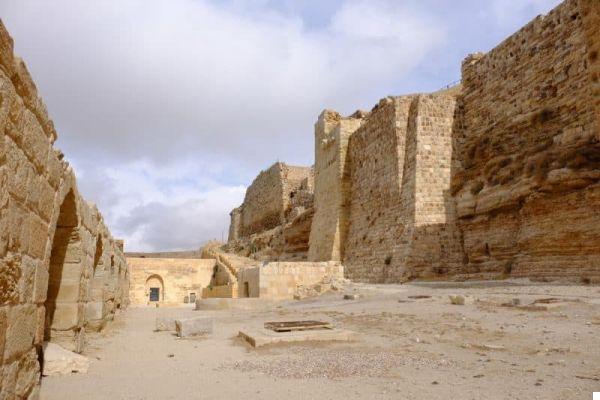
Day 6 - Petra
Petra it needs no introduction and is, with good reason, the centerpiece of any trip to Jordan. This ancient Nabataean city was only discovered in 1812 and is truly the jewel of the country (as well as one of the 7 wonders of the world). Petra's site is huge and I don't think anyone expects it like that when they go there, but they soon realize it. Get ready to walk a lot! If you dedicate just one day to it from sunrise to sunset (enough to see all the main and most iconic places), I recommend the itinerary below. It's about 24km on foot, including thousands of steps up and down. If you are too tired or not in great shape you can take the donkey or the camel to do some paths and / or the horse to cross the Siq but the prices are very high. Inside the site you can find everything, water, food and bathrooms almost everywhere.
- Follow the Siq to the Treasury
- Take the path on the left that goes to the Sacrifice and follow it all until you reach the Museum
- Take the path to the Monastery (30 'of steps one way) - if you want, continue for another 15' to see the view over Wadi Araba
- Get off where you came up and walk along the Via Colonnata visiting the Byzantine Church, the Great Temple, etc.
- Reach and visit the beautiful Royal Tombs, then take the path up to the Treasury view point (40 'of steps one way)
- Go back along the same street, then from the Siq passing through the Theater
Petra by night: every Monday, Wednesday and Thursday you can (and it's worth it) join the Petra by night tour (17 JOD - buy tickets in the morning at the visitor center), where you can admire the Siq and the Treasury illuminated by the moon and from hundreds of candles with traditional Bedouin music in the background. The tour starts at 20:30 and lasts 2h.
Day 7 - Wadi Rum desert
Today we leave early from Petra for the Wadi Rum desert (1h and 30 '), the famous deserto at Lawrence d'Arabia. Once you arrive at the Visitor Center you must leave the car and then continue with the 4 × 4 pick-up of the guide who will take you to discover the wonders of the tour. Contract with the tented camp manager to do the 4-6 h tour (approximate cost 40 JOD per tour + night, dinner and breakfast in the camp). This is one of the most exciting days in my opinion, probably because the desert is the landscape that I love the most and that I feel most mine. It is a hostile territory that forces reflection, it is impossible to take root and every trace of our passage is erased in a few minutes. There is a deafening silence in the desert, you are alone even when you are in company, but the colors and skies you see in the desert you do not see anywhere else in the world. I have dreamed of seeing this desert for many years and the mythical desert of Lawrence of Arabia did not disappoint my very high expectations.

Day 8 - Little Petra and return to Amman
After the view of the sunrise over the desert and a rich breakfast, we return to take the car back to the Visitor Center and return to Amman. I recommend you break the tornado day in Wadi Musa to visit Little Petra (Siq al-Barid), which was probably an agricultural center and a trading post for the camel caravans to Petra. The site is small but there are no tourists and it is of great charm. To return to Amman, use the beautiful road that runs along the Dead Sea and offers breathtaking views and views.








